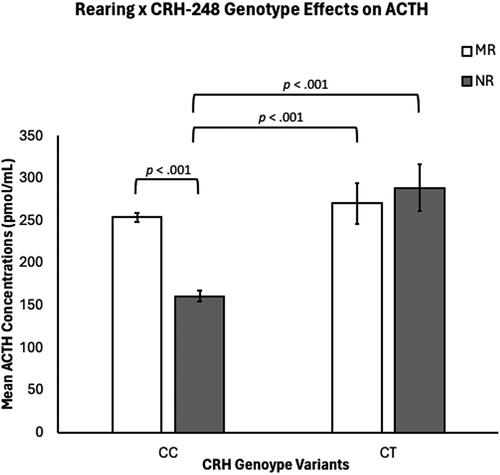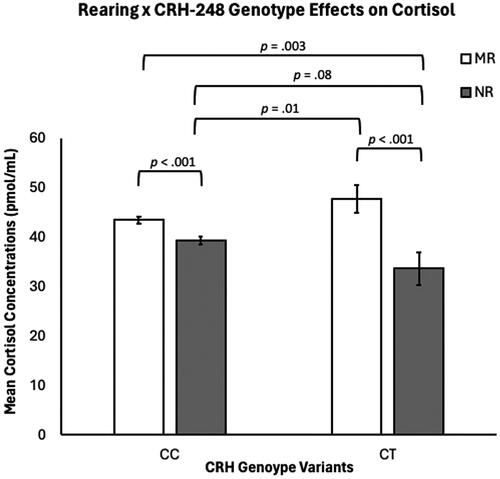Figures & data
Table 1. Sample characteristics.
Figure 1. There were significant rearing and CRH-248 genotype effects on ACTH concentrations, with NR subjects exhibiting lower ACTH concentrations when compared to MR subjects (p <.049), and CC subjects exhibiting lower ACTH concentrations, when compared to CT subjects (p <.001). There was a rearing-by-CRH-248-genotype interaction, with NR CC subjects exhibiting lower ACTH concentrations, when compared to MR CC subjects (p =.003) and to NR CT subjects (p <.001) and to MR CT subjects (p <.001). MR subject’s ACTH concentrations were undifferentiated by genotype (p =.051) and there was not a significant difference in ACTH concentrations for MR CC and NR CT subjects (p =.22) or between MR CT and NR CT subjects (p =.62).

Figure 2. There were significant rearing effects on cortisol concentrations (p <.001), with NR subjects exhibiting lower cortisol concentrations, when compared to MR subjects. There was not a main effect for CRH-248 genotype on cortisol concentrations (p >.05). There was a rearing-by-CRH-248-genotype interaction (p =.024), with NR CC subjects exhibiting lower cortisol concentrations, when compared to MR CC subjects (p <.001). NR CT subjects exhibited lower cortisol concentrations, when compared to MR CT subjects (p =.001) and MR CC subjects (p = .003). NR CT subjects also exhibited lower cortisol concentrations than MR CT subjects (p = .01) and their cortisol concentrations trended lower, when compared to NR CC subjects (p = .08). MR subjects’ cortisol concentrations were undifferentiated by genotype (p >.05).

